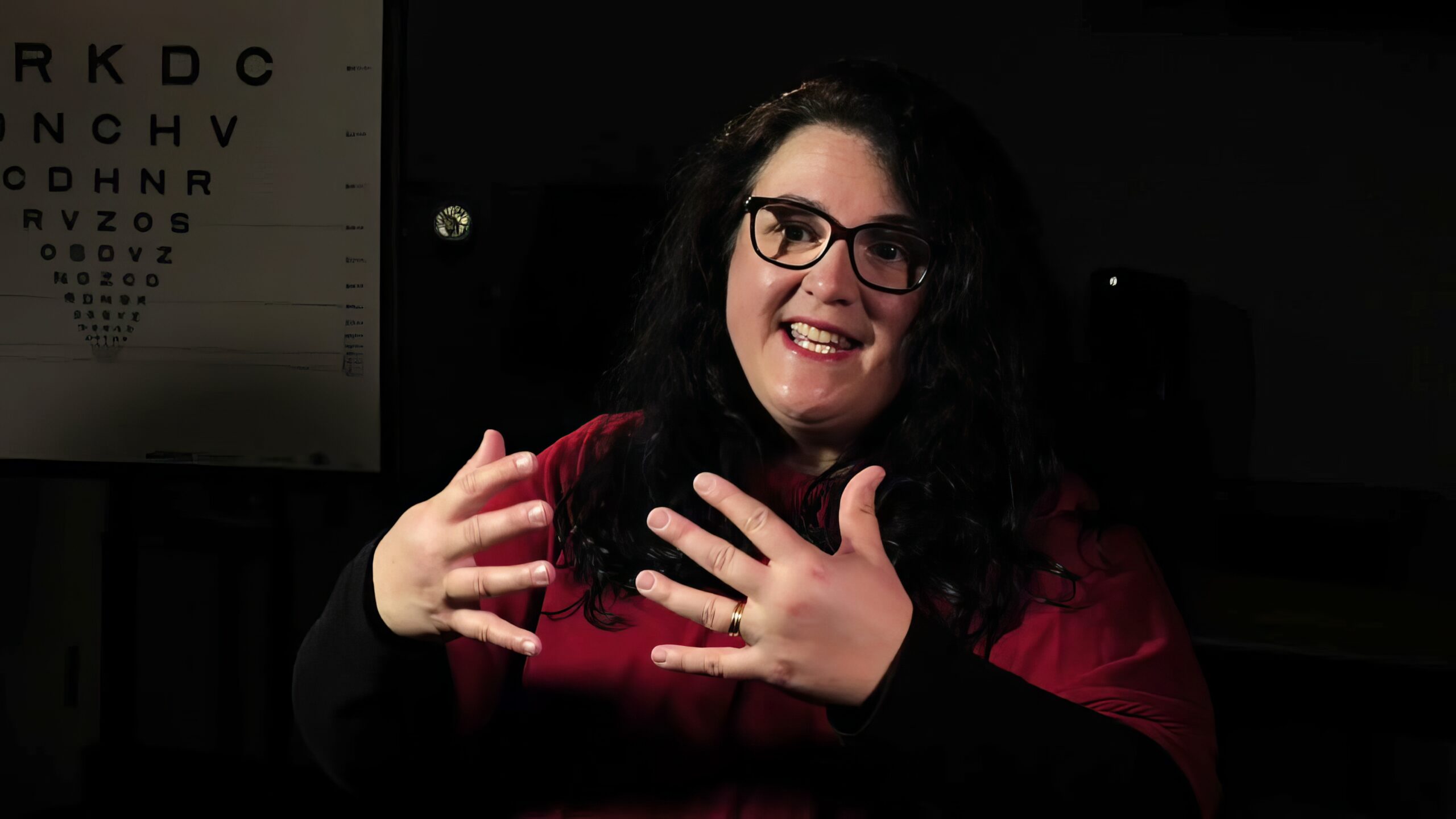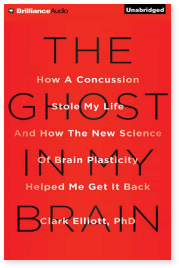A Traumatic Brain Injury That Changed Everything
She came to the Mind-Eye Institute seeking recovery from years of struggles caused by a traumatic brain injury. What she left with was a whole lot more – a “deeper understanding” of herself as a person.
“Before my accident, I was more concerned about time, schedules, and to-do lists. My life is different now; the Mind-Eye Institute has helped me become the best possible person I can be. I have a greater appreciation for my eyes and ears, my brain, and neuroplasticity (the brain’s ability to reorganize itself after injury).
“I have attended the Brain Injury Association of Michigan conferences and participated in support groups to share what I have learned about traumatic brain injury to help make a difference in people’s lives. The Mind-Eye Institute has turned out to be the greatest blessing in my life. Dr. Zelinsky [of the Mind-Eye Institute] has given me hope.”
Those comments come from Gisele Kuhn, a registered nurse and university faculty member in southwest Michigan, who was unaware of how profoundly her life would change when she slipped and fell unconscious on black ice during the winter of 2014. It would be that fall, and the debilitating symptoms which followed, that would take Gisele on a journey, ending eventually at a clinic building in Chicago’s north suburb of Northbrook. It is home to a program internationally recognized for applying 21st century scientific advancements to the practice of optometry and neuro-optometric rehabilitation – namely, the Mind-Eye Institute.
Symptoms of Brain Injury That Disrupted Daily Life — And How Mind-Eye Approaches Them
“I came to Mind-Eye because of the symptoms affecting my daily living and my search for a way to get better. In the end, Dr. Zelinsky helped all of me – not just my eyes and brain but my inner strength,” Gisele says.
The “Dr. Zelinsky” to whom she refers is Deborah Zelinsky OD, founder and now executive research director of the Mind-Eye Institute.
“The retina is composed of brain tissue and is part of the central nervous system. At the Mind-Eye Institute, we recognize the critical role that the retina plays in overall physical and mental health and the importance of updating traditional eye tests for people with compromised brain function to evaluate their ‘retinal (visual) processing,’” Dr. Zelinsky says. “Part of retinal processing requires central and peripheral eyesight to function in synchronization with listening, as well as the other sensory inputs. Another part of retinal processing includes internal visualization and planning. Retinal processing is what enables people to respond appropriately to changes in their environment.”
“These are not eyeglasses for sharpening eyesight to 20/20, but for improving retinal processing."
— Dr. Deborah Zelinsky, OD, Founder of the Mind-Eye Institute
When functioning normally, visual processing enables people to understand and interact appropriately to the world around them, Dr. Zelinsky explains. When brain circuitry is disrupted due to injury or neurological disorders such as post-traumatic stress disorder, people become confused about their surrounding environment and exhibit inappropriate reactions and responses to movement, sounds and light.
“Our goal is to build better brains by developing or normalizing processing and bringing comfort and relief to patients,” Dr. Zelinsky states. The Mind-Eye Institute combats the symptoms of brain injury and neurological disorders and helps redevelop – or initially develop – a patient’s visual processing capabilities by prescribing highly individualized therapeutic eyeglasses following extensive patient testing.
“These are not eyeglasses for sharpening eyesight to 20/20 but for improving retinal processing,” Dr. Zelinsky emphasizes.
The Long Journey from Misdiagnosis to Hope
Gisele’s visual processing was anything but normal after her fall. She spent a week in the hospital recovering from a hematoma at the back of her head and from hemorrhaging in the front part of her brain. But, even after discharge from the hospital, she knew “things were not right.”
“I was unable to do simple, everyday activities. I could no longer cook because my brain was unable to signal my hand to turn off the stove when my heightened sense of smell told my brain that food was burning. In the supermarket, I was overwhelmed with sounds, lights, smells, and the need to make decisions. I could no longer do calculations or keep track of time or use the computer. I had problems spelling words, writing words in cursive, and reading. I would read a paragraph from a book and forget what I just read. When out walking my dog, I would become nauseous and dizzy watching my dog move from one side to the other,” Gisele says.
She also experienced difficulties with balance as well as time-management, planning, and performance capabilities.
Gisele was teaching senior-level nursing students at the time of her fall. When she returned to work after her accident, her symptoms forced her to develop a “newer, more creative teaching style. My brain had to work extra hard and would become exhausted. All I could do was teach, go home, and go to sleep.”
Gisele’s family physician and neurologist were unable to provide the help Gisele needed. Meanwhile, Gisele had reached the three-year anniversary of her accident, still struggling with the symptoms of an injured brain.
Discovering Neuro-Optometric Therapy Through “The Ghost in My Brain”
Then happened what some people might describe as “coincidence” — and others, perhaps, a “miracle.” The sister of Gisele’s physician, who was working at a brain injury rehabilitation hospital in Indianapolis, Indiana, inadvertently learned about Gisele’s condition through Gisele’s daughter, whom she met at a fitness facility. The Indiana woman later talked to her sister, the physician, about the conversation she had had at the fitness center, and both quickly realized that the person they were discussing was Gisele, the physician’s patient. They created a plan of care to help Gisele improve.
“The sister also gave my physician a copy of the book The Ghost in My Brain to read,” Gisele says. In the book, author Clark Elliott, PhD, a DePaul University Chicago professor, details years of struggles similar to those of Gisele following his own brain injury in a car collision and describes the successful efforts of Dr. Zelinsky and cognitive restructuring specialist Donalee Markus, PhD, of Designs for Strong Minds in Highland Park, Illinois.
As Gisele’s physician read the book, “she recognized many of my symptoms and struggles that I had earlier described and referred me for neuro-psychological testing and evaluation in Indianapolis,” Gisele says.
Gisele received initial therapy at the brain injury rehabilitation facility in Indianapolis and, from there, was referred to a neuro-ophthalmologist at the University of Indiana. “By this time, things were working a little better in my brain,” but clearly life remained far from normal, Gisele recalls.
“The neuro-ophthalmologist acknowledged my symptoms and indicated that a blow to the head such as I had experienced is serious and requires evaluation for eye-brain connection,” Gisele says. “At that point, I listened to an audio version of Clark Elliott’s book. Learning more about Dr. Elliott’s successful search for help with his struggles made me determined to contact the Mind-Eye Institute.”
Transformative Recovery at the Mind-Eye Institute
It is a decision she has never regretted.
Gisele experienced what she calls “huge differences” within the first month of donning her first pair of prescribed Mind-Eye “brain” glasses in 2017. “My entire body was trying to restructure itself,” she says.
Dr. Zelinsky says “brain” glasses bend light in different ways across the retina. Light is the way in which the retina communicates with the brain, and the brain responds. The light triggers electrical signals that propagate through nerves. In fact, the retina helps route information through multiple pathways to the brain’s cortex. Variance in light signals can create new brain signaling pathways that are uncorrupted by injury or disease or rebuild (or more often, circumvent) damaged ones, thereby enhancing a patient’s spatial awareness and perception.
Now, in 2021, Gisele says she is probably 95 percent recovered.
“I may not be fully who I was before, but I am a better version of myself. Headaches and pain have decreased drastically. I am able to cook a variety of dishes without burning the food. I can read and comprehend what I read, do math, play the piano, drive a car without symptoms, start a project and finish it, and live better in general. I am able to plan again, jotting down new ideas in a notebook that I keep near my bed — something I used to do before my accident. Even my handwriting has improved. My creativity is sharper than before,” Gisele says.
“The Mind-Eye Institute has given me the ability to dream again.”
Learn More About "The Ghost in My Brain"
Artificial intelligence expert, Clark Elliott PhD, who struggled with symptoms of traumatic brain injury for eight years following a car crash was able to be “put back together again” in steps, with remarkable progress in the first month, thanks to the efforts of two professional women — a neuroscientist and an optometrist using advanced neuro-optometric rehabilitation.



